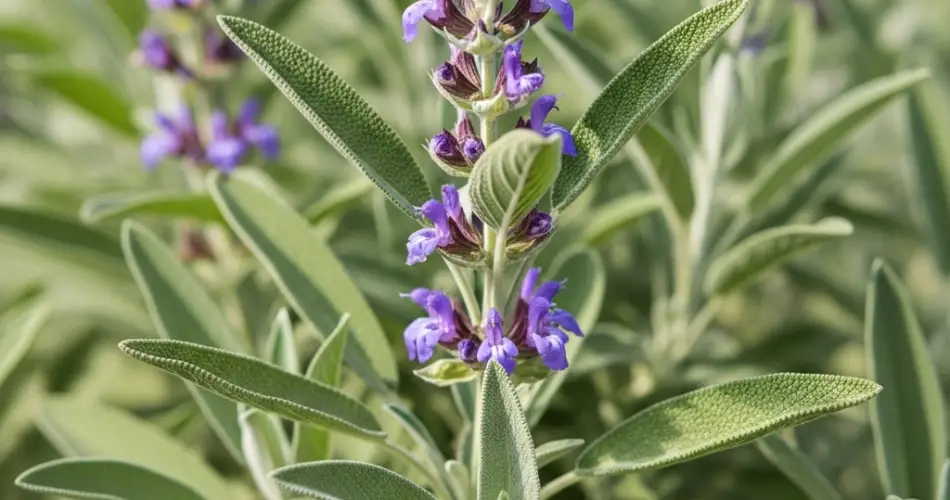Sage is a perennial herb known for its earthy aroma, silvery-green foliage, and culinary and medicinal uses. But beyond its flavor and fragrance, sage is also a fantastic companion plant in the garden. Its ability to deter pests, attract pollinators, and coexist with other herbs and vegetables makes it an ideal partner in any planting scheme.
Whether you’re growing sage in containers or garden beds, understanding which plants benefit from growing nearby can improve your garden’s productivity and health. Here’s a guide to the best companion plants to grow with sage—and which ones to keep apart.
Why Sage Makes a Great Companion
Sage has natural pest-repelling properties thanks to its strong scent and essential oils. It’s especially effective against cabbage moths, carrot flies, and black flea beetles. In addition to deterring pests, sage’s flowers attract pollinators like bees and butterflies when allowed to bloom.
Sage prefers full sun and well-drained soil. It’s drought-tolerant once established and doesn’t require heavy feeding—making it an easy-going neighbor for many sun-loving herbs and vegetables.
1. Rosemary
Rosemary and sage are a classic herb garden combination. They share similar needs: both thrive in dry, sunny conditions and well-draining soil. Planted together, they help repel insects and don’t compete heavily for nutrients.
Tip:
Avoid overwatering—both plants prefer their soil on the dry side. Let the topsoil dry out between waterings.
2. Thyme
Thyme and sage grow well together because they both enjoy similar conditions. Thyme can even serve as a ground cover around sage, suppressing weeds and keeping the soil moist while maintaining airflow.
Benefit:
Both herbs have strong scents that confuse pests and protect nearby plants like cabbage or broccoli.
3. Carrots
Sage makes a great partner for carrots because it helps repel carrot flies—tiny insects that lay eggs around the base of carrot plants and can ruin crops.
How to plant:
Interplant rows of sage with carrots or place potted sage plants around carrot beds to create a natural protective barrier.
4. Cabbage and Other Brassicas
Sage is known to repel pests like cabbage moths and flea beetles, making it an excellent companion for cabbage, cauliflower, Brussels sprouts, and kale.
Planting tip:
Space sage around the perimeter of brassica beds or interplant between rows. This natural pest deterrent can reduce the need for chemical treatments.
5. Strawberries
Surprisingly, sage can be a good neighbor for strawberries. Its scent may deter pests like slugs and beetles that are attracted to strawberry fruits and leaves.
Caution:
Avoid crowding strawberries—sage should be planted nearby, not directly among strawberry plants, to avoid root competition.
6. Tomatoes
While not always recommended in some guides, many gardeners find that sage can help deter tomato hornworms and whiteflies. However, sage should be planted at a short distance from tomatoes rather than right next to them, as tomatoes prefer more moisture than sage.
Best practice:
Grow sage in a nearby container or a corner of the tomato bed where it gets similar sun exposure but has separate watering needs.
7. Beans
Bush and pole beans can benefit from sage’s pest-repelling properties. Sage helps keep black flea beetles and aphids away from tender bean leaves.
Tip:
Plant sage at the edges of a bean patch or in containers nearby, allowing beans to climb or spread freely.
8. Oregano
Like rosemary and thyme, oregano pairs well with sage due to its similar growth preferences. Both are Mediterranean herbs that prefer dry conditions and minimal maintenance.
Benefit:
Together, they create a fragrant and pest-resistant herb patch that looks beautiful and performs well.
Plants to Avoid Planting Near Sage
While sage has many allies in the garden, there are a few plants that don’t make good neighbors.
-
Cucumbers: Sage can stunt the growth of cucumbers, possibly due to root interactions or conflicting soil needs.
-
Rue: Both are strong herbs, but they may compete for space and nutrients.
-
Basil: Basil prefers more moisture than sage and doesn’t thrive in the drier conditions sage enjoys.
To ensure the success of your sage and its companions, group plants with similar sunlight, soil, and watering needs.
Final Thoughts
Sage is a resilient and beneficial plant to have in the garden—not just for culinary use, but also for its role in natural pest control and plant protection. When paired wisely with herbs like thyme and rosemary or vegetables like carrots, beans, and brassicas, sage can help your garden flourish without relying on synthetic pesticides.
Keep in mind the basic care preferences of sage—sunny spots, well-draining soil, and minimal watering—and it will reward you by supporting neighboring plants and offering a harvest of fragrant, flavorful leaves throughout the season.



